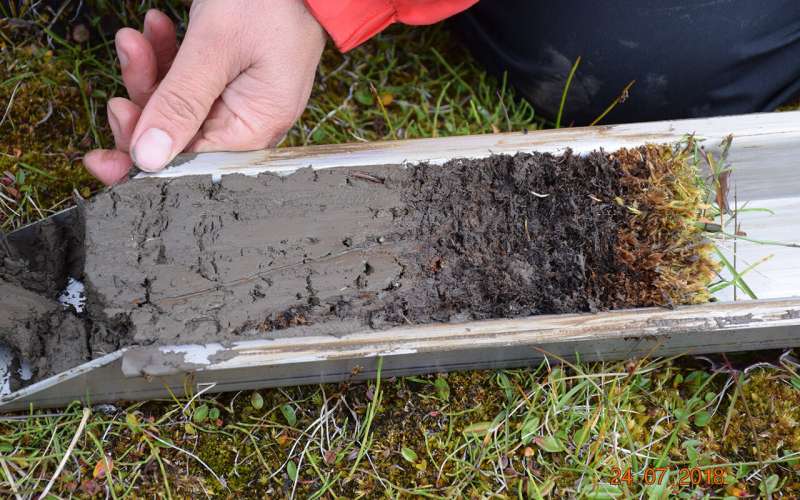In 2018, carbon sinks were discovered by an international research group who bored for soil samples in three sites around the Isfjorden fjord in Svalbard, which is part of Norway. The same phenomenon was seen at each boring site: mineral soil covered by a thin layer of organic matter. In other words, this layer contains a lot of carbon extracted from the atmosphere through photosynthesis.
The research group headed by researcher Minna Väliranta from the University of Helsinki has given the name “proto-peat” to such organic soil accumulations, which are composed mostly of moss formed in increasingly warm arctic climate conditions.
“It’s not yet peat in the actual sense of the word, but you could say it’s the starting point for the formation of peat,” says Väliranta, who works at the Faculty of Biological and Environmental Sciences. The research group also includes Teemu Juselius and Sanna Piilo, doctoral researchers under Väliranta’s supervision.
Such proto-peat deposits also elicit international interest. Väliranta is involved in a larger project funded by the Natural Environment Research Council (NERC), a British institution corresponding to the Academy of Finland. This project investigates precisely the same phenomenon, that is, whether global warming has already led to the spread of peatland vegetation into the Arctic. This spread of vegetation is part of a more extensive phenomenon known as “arctic greening,” which commonly refers to increasing shrub growth in the Arctic, as vascular plants spread to regions previously barren.
“If this process that generates proto-peat occurs extensively, an unexpected carbon reservoir, or a plant community that mitigates climate change, may be in the process of establishing itself in the north. This reservoir has not been included in the modeling of ecosystems and the atmosphere, as it has traditionally been thought that no new peatlands are formed,” Väliranta notes.
Climate–ecosystem models are continually evolving, and only recently have attempts been made to include the impact of peatlands in such models.
“You can say that the discovery of new carbon sinks brings into play a new component that must be considered in models to better predict the functioning of ecosystems in a warming climate,” Väliranta says.
The research was published in Scientific Reports.
Related article:
Using artificial intelligence to analyze large amounts of biological data
Study suggests solar energy can be cleanly converted into storable hydrogen fuel


